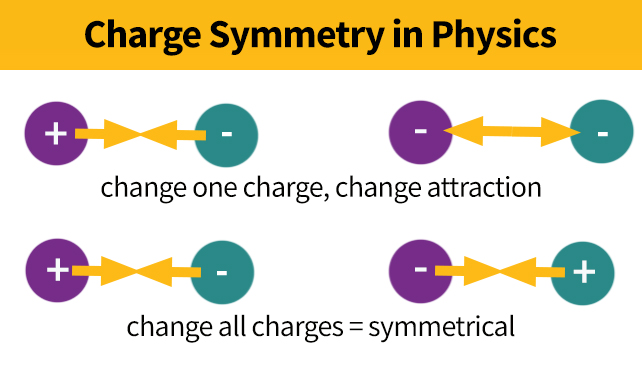Axions are hypothetical elementary particles that, if they exist, would clean up a problematic exemption to a rule involving what's known as CP symmetry.
As a bonus, their existence could also scrub out another perplexing mystery in science – the invisible added mass that helps galaxies cling together, known as dark matter.
While there have been some tantalizing signs of their existence, physics is yet to confirm whether they are the solution we're looking for, or a mere bubble of wishful thinking.
What is CP symmetry?
The C in this case stands for charge, like the negativity of electrons and positivity of protons, while P means parity, a term describing the spatial coordinates of a particle, such as whether it curves off to the left or whizzes to the right.
Symmetry refers to changes that don't make much of a difference to a particular feature, just as rotating a square 90 degrees doesn't change the fact it's a square.
Ordinarily, flipping a particle's charge from a positive to a negative, or vice versa, would change how it responds to the charge of another particle.
Yet if we flipped all of the charges involved in a process – turning them all into their antiparticles – nothing would change. The same rules would still apply. We could say a 'charge-flipped' Universe is symmetrical.

Similarly, flipping the spatial coordinates so our Universe looks like it's in a mirror, where left is now right and right is now left, would also run on the same physics. This 'parity-flipped' version of the Universe would also be symmetrical.
Incidentally, time also has a symmetry about it. For most rules, rewinding a process should simply take you back where you started, with nothing looking any different.
If we looked at any particular rule in physics, we might say it has CP symmetry if the rule works the same after flipping both the charge and the spatial coordinates together. Most rules seem to follow this trend nicely … until they don't.
In 1964, a team including American particle physicist James Cronin and nuclear physicist Val Fitch saw something in the decay of two different kinds of quark-antiquark pairings called kaons that would only be seen if CP symmetry didn't hold true for weak interactions.
One observation is annoying, but could still be dismissed as an experimental quirk. In recent decades, more direct evidence of this violation has also popped up in particles made up of quarks, and possibly among other particles, building confidence that a bona fide break exists, at least in a tiny percentage of interactions.
What is the strong CP problem?
What is frustrating is we don't see the CP violation happening when quarks are bound in groups by the strong force, as they are inside particles like protons and neutrons.
Physicists call it the strong CP problem, and it happens to be an annoying gap in our observations of when we would expect a combination of charge and parity symmetry to be violated (and when it isn't).
The Standard Model suggests if we've seen it in one, we should also see it in the other. So something isn't quite right.
Maybe something is wrong with the Standard Model. Or perhaps some clever tweaking is needed to make it all fit.
In 1977, physicists Roberto Peccei and Helen Quinn came up with a solution that could explain the difference by simply introducing a new kind of field.
Problem solved, right? The only issue is the new field means a new particle, one with no charge and a tiny, tiny mass.
They called it an axion, amusingly named after a laundry detergent in the hopes it would clean up their mess.
Unfortunately it's left physics with a stain that won't wash out so easily.
Where are all of these axions?
In spite of decades of hunting for particles with the characteristics of an axion, nothing concrete has been found.
Still, physicists haven't given up looking.
One method is to look for particles that change into photons as they pass through a magnetic field. While some experiments have found no trace of this phenomenon, others continue to hint at its possibility.
In 2020, an experiment called XENON1T delivered results that it's tempting to interpret as axions, given their neat fit. The glow of axions in magnetic fields could also explain an unexpected glow of distant darkness observed by the New Horizons probe in 2022.
Physics is a conservative field, though, and far more data would be needed before anybody could celebrate it as a discovery of axions.
What would happen if we found axions?
First of all, the strong CP problem would be less of a problem.
Axions should also have popped into existence in abundance in the early Universe, squeezed out of the field thought to have rapidly inflated space to gargantuan proportions. Theory also predicts they'd drag against this field, slowing them down so they didn't zoom away from one another so quickly.
If they did appear, they shouldn't interact with the other particles in any noticeable way, making them harder to spot.
Despite their tiny mass, their huge numbers and relatively slow movement would still make them clump together in vast bodies that would act uncannily like dark matter.
The existence of axions would fill some incredible gaps in our understanding of the Universe, just as the Higgs boson filled in a nagging gap in our knowledge of mass.
All Explainers are determined by fact checkers to be correct and relevant at the time of publishing. Text and images may be altered, removed, or added to as an editorial decision to keep information current.
